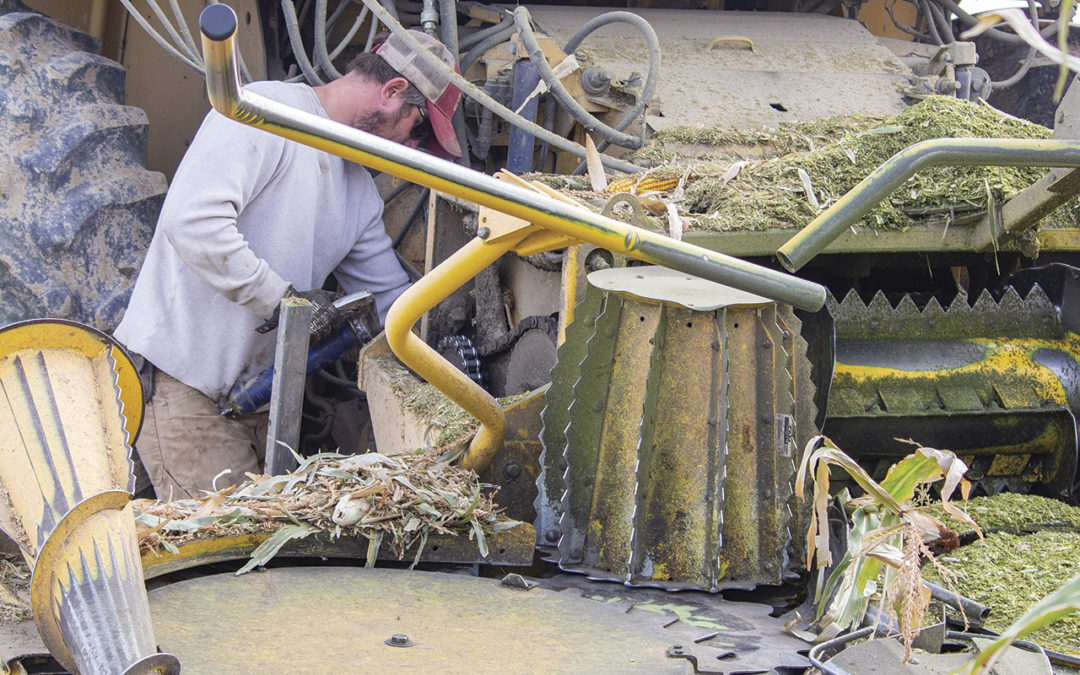To read this article in French, click here.
It’s that time of year again when we are all excited to get onto our land. Over the winter, you and your team have been working hard on the equipment and machinery that we rely upon for this year’s crops. One of the best things you can do to prevent injuries on your farm is to conduct this maintenance and ensure everything is in good working order. The Ministry of Labour considers this task as preventative maintenance.
Preventative maintenance is the practice of servicing equipment on a regular schedule to prevent serious failures and improve the performance and longevity of the machinery. Owners and operators may not realize that preventative maintenance also improves the safety on their farm. Equipment that is not properly maintained can be dangerous and increases the risk of a workplace incident, injury or fatality.
The various types of maintenance
- Routine maintenance: Routine maintenance should be properly documented, and all documents should be organized and readily available. Ensure you have maintenance checklists for repetitive tasks that clearly state how often the maintenance should occur. In the same place where the maintenance records are stored, you should also have handy all receipts, owner’s manuals, dealership information, warranties and service records. Keep track of all maintenance tasks completed, whether they are done in-house or by a professional.
- Off-season maintenance: Off-season preventative maintenance is more thorough. During the off-season when the equipment is not in constant use is a good time to disassemble the machines to ensure that the equipment is inspected and cleaned completely so it continues to run at its peak efficiency.
- Daily maintenance: Daily preventative maintenance can be as simple as cleaning, lubricating and inspecting equipment while looking for abnormal wear patterns around moving parts or leaking fluid.
- Preventative maintenance: Preventative maintenance should be completed to avoid or at least lower the risk of a breakdown during the busy season. It is less stressful and more cost-effective to be proactive rather than reactive. You should always consult the manufacturer’s user manual for your exact make and model of equipment when completing any maintenance.
Preventative maintenance on farm structures
Winters in Canada can cause damage and deterioration to buildings and structures. Farmers must regularly check the condition of their buildings to ensure they remain stable and safe.
Some of the items that should be looked for and taken care of before they become a problem are:
- Snow built up on roofs
- Areas that are damaged or weakening
- The buildings’ wind bracing components
- Water drainage, to ensure it is directed away from the buildings
Always make sure, when performing any building inspections or maintenance on a ladder, that you are using proper ladder safety procedures.
Preventative maintenance on equipment
Preventative maintenance on equipment should be completed on a daily and seasonal rotation. Whether you are planting, harvesting or in between, you should always ensure that you are completing your preventative maintenance.
Farmers often complete preventative maintenance themselves. Farm equipment is becoming more complex which requires more qualified technicians to complete the maintenance. It is imperative that any farmer completing their own maintenance be sure they are completing the maintenance correctly and safely; otherwise, the risk of accidents increases drastically.
When completing preventative maintenance, always make sure you are following safe operating procedures.
- Ensure the machine is off, the key is removed and any parts that can move or rotate have been locked.
- Use the right tools for the job at hand.
- Follow the instructions in the manufacturer's user manual.
- Make sure all guards removed during maintenance are replaced when done.
- Wear any required personal protective equipment.
- If working under a machine, make sure jack stands are used and used correctly.
- Make certain hydraulic locks are used for raised hydraulic parts and set the unit on blocks as added protection.
- Ensure only qualified, properly trained people perform the maintenance.
Proper storage of the equipment as well as any replacement parts is critical. Exposure to harsh winters and scorching summers can lead to premature breakdown of the farm equipment and replacement parts. Always store replacement parts inside, in a clean space and away from the elements.
Remember that documentation of all maintenance is critical in demonstrating your due diligence to the Ministry of Labour in the event of a critical injury. We cannot emphasize enough the importance of keeping detailed records of all preventative maintenance with dates of service.
The safety of your family and employees should always be at the forefront of your mind. One of the ways you can protect their safety, as well as your own, is to ensure that all buildings, structures and equipment are safe and properly maintained. Keeping your equipment well maintained decreases unexpected breakdowns, improves efficiency and longevity, and helps retain their value. All of this increases profitability; however, the real value is keeping your farm safe and decreasing the number of preventable accidents, injuries and fatalities.
References omitted but are available upon request. Click here to email an editor.










